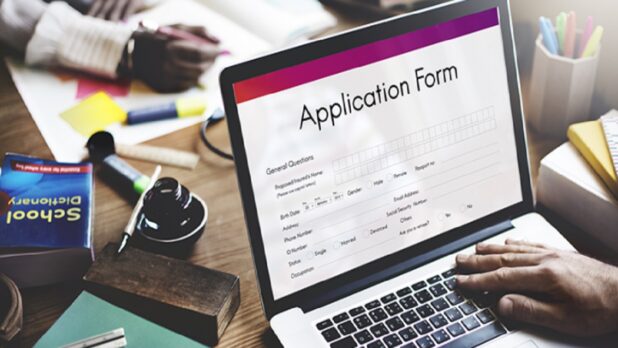A personal statement is perhaps the most important document that decides your fate when going to university. Many applicants do not consider it to be important, so they make mistakes that can cost a place at university. This article will tell you how to avoid such mistakes.
A personal statement is a document that reflects the results of passing exams, participation in extracurricular activities, achievements, and awards, as well as grades. A student is evaluated and compared to other students by the admissions committee.
Looking through the personal statement and application form, the admissions committee, first of all, looks at the following paragraphs:
- where and what education did the applicant receive;
- whether s/he took additional specialized courses;
- what are his (her) test scores for GMAT, TOEFL, GRE, etc?
- whether s/he participated in the organization of extracurricular activities;
- whether there is an experience of volunteer work – Americans love it;
- whether there is work experience;
- what are the achievements, for example, publications in magazines or first places at the olympiads?
Universities receive thousands of applications and personal statements and you need to stand out to be selected. The following simple steps will help make a good impression on the admissions committee.
Table of Contents
The steps on writing a personal statement to make a good impression

Shinyessays.com provides editing of a personal statement for college students. This kind of service is very popular lately due to the fact that such a company can provide an expert editor ready to edit not only personal statements but also any other type of college assignment.
Step 1. Find the right application form
Today, to enter a university, you do not need to come to the admissions committee in person and fill out forms. It is enough to go to the website of the chosen university and find a link to download the application there. It does not take much time.
Most American universities, when accepting applicants for undergraduate education, use a single questionnaire – the Common Application or the Universal College Application. By filling it out once, you can send several applications to different universities. For Master’s, MBA, Ph.D. programs, as well as in some universities that are not connected to the system with a single questionnaire, you will have to fill out separate questionnaires that are available on the websites of universities.
If for some reason you did not find the application on the university website, do not hesitate to write to the admissions office and ask them to send an application for admission to your email.
Step 2. Consider Deadlines
Create a new Excel file on your computer where you save the following information:
- A list of all universities and colleges you are applying to and their application deadlines. Write down for yourself when it is the best time to apply to the chosen educational institution.
- Pay attention to educational institutions that have a rolling admissions policy. This is when universities or colleges enroll or do not enroll applicants immediately upon application. When the course fills up, they stop accepting applications. In such institutions, an application must be submitted as early as possible.
- For each university/college, write down the list of required documents in a separate column.
Step 3. Prepare supporting documents

Typically, the list of documents to be submitted with the Application Form includes a high school diploma/certificate, grade point average (GPA), grade transcript, language test results, and identification documents. Without them, your application for admission will not be considered, and you risk losing a place on the course. Check if all the documents are ready before filling out and submitting the application.
Step 4: Check Your Social Media Profile
Yes, it may interest not only your friends. Typically, social networks are viewed by visa officers when they make a decision on a US visa. The admissions committee doesn’t care as much about your Facebook profile, but it’s better to be safe and take a critical look at all your social media content, edit if necessary. Any provocative statuses or photos should be deleted.
The same goes for email addresses: sending documents to a university from hotchick18 or URanIDIOT14 is not a very good idea. Make sure that your social media page does not contain provocative materials, and the mailing address does not contain indecent or stupid names. Ideally, if it contains your first and last name, for example, bill_smith. It’s better to have a Gmail account.
Step 5. Correctly fill out the section on work experience, achievements, and academic success
It is in this part of the application that you can prove yourself and draw the attention of the admissions committee to your merits.
If you have many achievements, you need to choose only the most important ones – those that really matter for the chosen program. Do not forget to mention the name of the company where you worked or had interned, and the dates when you were engaged in the mentioned activity. If you worked, write down the name of your position and how many hours per week you worked. Do not forget to write about the projects you have been involved in, as well as describe the qualities and skills you have gained – it is important to show the result.
If you have nothing to write in the list of achievements, do not be tempted to add a bunch of unnecessary information in this section. It is better to leave space than to write something that is not related to the topic. You won’t surprise the admissions committee by “donating a can of canned food to a truck driver stuck in traffic over the holidays.” On the contrary, in this way, you will only show that you do not know how to highlight important information and are not serious about the admission process.

Step 6. Check your university application and personal statement for errors
Don’t leave questions unanswered. From your application to the university, everything about you, your achievements, and your successes should be clear. Check the application several times and make sure you fill in every gap and check every form. Editing and proofreading are important parts of any work. If you didn’t complete a section, leave it blank so that the reviewers don’t think you didn’t notice the section.
Please review the application and personal statement carefully before submitting it. Check spelling and punctuation, look for errors and typos. Imagine yourself as a member of the admissions committee or an editor and think about what could be improved. You can print out a copy of your application and personal statement and give it to friends or a teacher to read. They may notice some shortcomings that you missed and also get a second opinion.
In addition to the application, you will have to write a motivational letter and to write a personal statement and an admission essay, essay-editor.net service will help.
 World Magazine 2024
World Magazine 2024






